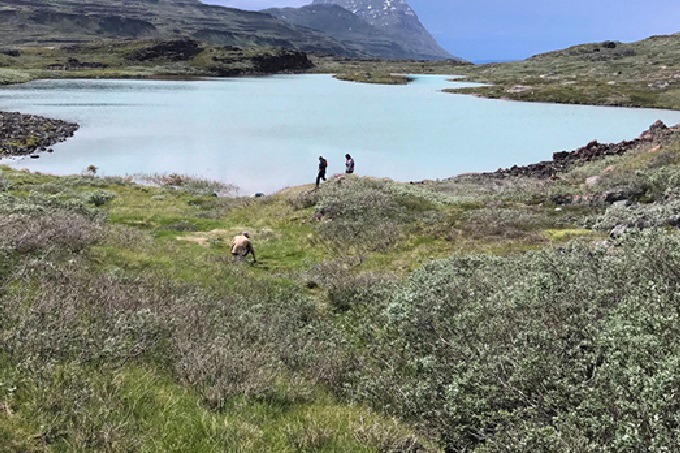Where did the Scandinavian Vikings disappear? Scientists found the answer

One of the great mysteries of late medieval history is why the Scandinavian Vikings left Greenland. For more than four centuries, the south of this island was very densely populated. There were several flourishing large settlements, but in the middle of the 15th century, they all became empty. Until now, historians have argued about what could have caused this. Recently, researchers finally found the answer to this intriguing question…
Greenland has always attracted the Scandinavians with its unusually seductive views of its verdant hills and fertile lands. At the end of the 10th century, Viking migrants set off on their usual sea voyage in search of a better life and landed on the shores of a captivating island. There they founded a large colony, which consisted of several villages. The population quickly reached several thousand people.
The colony flourished. The lands were cleared and sown with lush grass so that there was a place to graze herds of cattle. This settlement existed for four centuries, but then suddenly disappeared. People abandoned their homes and left.
For a long time, scientists believed that the reason for this was several winters in a row with extremely low temperatures. Researchers called this time the Little Ice Age. The question of why the Vikings left the prosperous village caused them bewilderment and gave rise to a lot of controversies for many years.
New research in this area, conducted recently by the University of Massachusetts Amherst, has finally shed the long-awaited light on this historical mystery. It was not the drop in temperature that forced the Vikings out of their familiar lands in Greenland, but… drought.

Assumptions of historians and new research
For decades, many scientists, including historians and anthropologists, were firmly convinced that the disappearance of the eastern settlement was associated precisely with the beginning of the Little Ice Age.
It was a time when the climate of the North Atlantic was especially unkind. This factor had an extremely negative impact on agriculture in Greenland. In the end, hunger forced the last surviving people to leave these lands and flee to the mainland.
Raymond Bradley is a Professor of Geosciences at the University of Massachusetts Amherst. He says that until the results of recent studies, scientists did not have accurate information about the location of all Greenlandic Viking settlements, and that was a huge problem. Samples for study were then taken from ice cores, which were located a thousand kilometers from the right place.
Moreover, they were taken at an altitude exceeding two thousand meters. Therefore, it is fundamentally wrong to judge the history of the settlement based on these data. Scientists had to find out how the climate changed near the Scandinavian farms themselves. After the analysis, the scientists were simply amazed by the unexpected results.
To obtain the necessary data, a team of researchers led by Bradley went to a local reservoir called “Lake 578”. It is located very close to an old Scandinavian farmhouse and next to one of the largest farms in the eastern settlement. The researchers spent a long three years collecting sediment samples from the lake. No one has studied this issue in such detail before. The 2000-year-old sample was subjected to the most thorough analysis.

Scientists studied it for the presence of two different markers. The first of these is a lipid called BrGDGT. Scientists used it to restore temperature fluctuations in the region. With it, you can learn in great detail how the weather conditions have changed. The second marker was obtained from the wax coating on plant leaves.
Researchers use it to determine the rate at which various grasses and all other plants lose moisture through evaporation. Therefore, it is an indication of how dry the weather has been. During the research, it was unexpectedly found that there were no significant changes in air temperature during this time, but the climate became more and more dry.
The long-awaited solution turned out to be simple
The drought meant that Scandinavian farmers had to spend the winter using stocks made during the fertile years. Even if the year was good enough, the animals were often so weak that they had to be driven out into the fields as soon as the snow began to melt. It couldn’t last forever. The drought intensified, and with it grew a heap of economic and social problems in society. The settlement began to die out and soon disappeared altogether.
Scientists consider the study to be incredibly important for humanity, not only from a historical point of view. It fundamentally changes the whole understanding of early European history and emphasizes the great importance of further studying how environmental factors affect human society. The future depends on it.




